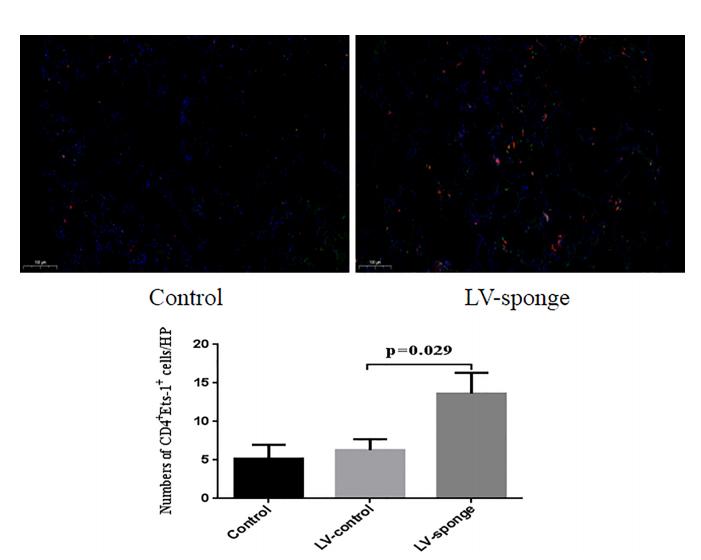ETS1 Antibody - #DF6488
製品説明
*The optimal dilutions should be determined by the end user. For optimal experimental results, antibody reuse is not recommended.
*Tips:
WB: For western blot detection of denatured protein samples. IHC: For immunohistochemical detection of paraffin sections (IHC-p) or frozen sections (IHC-f) of tissue samples. IF/ICC: For immunofluorescence detection of cell samples. ELISA(peptide): For ELISA detection of antigenic peptide.
引用形式: Affinity Biosciences Cat# DF6488, RRID:AB_2838450.
折りたたみ/展開
Avian erythroblastosis virus E26 (v ets) oncogene homolog 1; C ets 1 protein; c-ets-1; ETS 1; Ets protein; ETS proto-oncogene 1, transcription factor; ETS1; ETS1 oncogene; ETS1 protein; ETS1_HUMAN; EWSR 2; EWSR2; FLJ10768; Oncogene ETS1; P54; Protein C-ets-1; v ets avian erythroblastosis virus E2 oncogene homolog; v ets avian erythroblastosis virus E2 oncogene homolog 1; v ets avian erythroblastosis virus E26 oncogene homolog 1; v ets erythroblastosis virus E26 oncogene homolog 1; v-ets erythroblastosis virus E26 oncogene homolog 1;
免疫原
A synthesized peptide derived from human ETS1, corresponding to a region within the internal amino acids.
Highly expressed within lymphoid cells. Isoforms c-ETS-1A and Ets-1 p27 are both detected in all fetal tissues tested, but vary with tissue type in adult tissues. None is detected in brain or kidney.
- P14921 ETS1_HUMAN:
- Protein BLAST With
- NCBI/
- ExPASy/
- Uniprot
MKAAVDLKPTLTIIKTEKVDLELFPSPDMECADVPLLTPSSKEMMSQALKATFSGFTKEQQRLGIPKDPRQWTETHVRDWVMWAVNEFSLKGVDFQKFCMNGAALCALGKDCFLELAPDFVGDILWEHLEILQKEDVKPYQVNGVNPAYPESRYTSDYFISYGIEHAQCVPPSEFSEPSFITESYQTLHPISSEELLSLKYENDYPSVILRDPLQTDTLQNDYFAIKQEVVTPDNMCMGRTSRGKLGGQDSFESIESYDSCDRLTQSWSSQSSFNSLQRVPSYDSFDSEDYPAALPNHKPKGTFKDYVRDRADLNKDKPVIPAAALAGYTGSGPIQLWQFLLELLTDKSCQSFISWTGDGWEFKLSDPDEVARRWGKRKNKPKMNYEKLSRGLRYYYDKNIIHKTAGKRYVYRFVCDLQSLLGYTPEELHAMLDVKPDADE
種類予測
Score>80(red) has high confidence and is suggested to be used for WB detection. *The prediction model is mainly based on the alignment of immunogen sequences, the results are for reference only, not as the basis of quality assurance.
High(score>80) Medium(80>score>50) Low(score<50) No confidence
研究背景
Transcription factor. Directly controls the expression of cytokine and chemokine genes in a wide variety of different cellular contexts. May control the differentiation, survival and proliferation of lymphoid cells. May also regulate angiogenesis through regulation of expression of genes controlling endothelial cell migration and invasion.
Sumoylated on Lys-15 and Lys-227, preferentially with SUMO2; which inhibits transcriptional activity.
Ubiquitinated; which induces proteasomal degradation.
Cytoplasm. Nucleus.
Note: Delocalizes from nucleus to cytoplasm when coexpressed with isoform Ets-1 p27.
Highly expressed within lymphoid cells. Isoforms c-ETS-1A and Ets-1 p27 are both detected in all fetal tissues tested, but vary with tissue type in adult tissues. None is detected in brain or kidney.
Belongs to the ETS family.
研究領域
· Cellular Processes > Cell growth and death > Cellular senescence. (View pathway)
· Environmental Information Processing > Signal transduction > Ras signaling pathway. (View pathway)
· Human Diseases > Infectious diseases: Viral > HTLV-I infection.
· Human Diseases > Cancers: Overview > Pathways in cancer. (View pathway)
· Human Diseases > Cancers: Specific types > Renal cell carcinoma. (View pathway)
参考文献
Application: IF/ICC Species: Mouse Sample: thyroid
Restrictive clause
Affinity Biosciences tests all products strictly. Citations are provided as a resource for additional applications that have not been validated by Affinity Biosciences. Please choose the appropriate format for each application and consult Materials and Methods sections for additional details about the use of any product in these publications.
For Research Use Only.
Not for use in diagnostic or therapeutic procedures. Not for resale. Not for distribution without written consent. Affinity Biosciences will not be held responsible for patent infringement or other violations that may occur with the use of our products. Affinity Biosciences, Affinity Biosciences Logo and all other trademarks are the property of Affinity Biosciences LTD.

